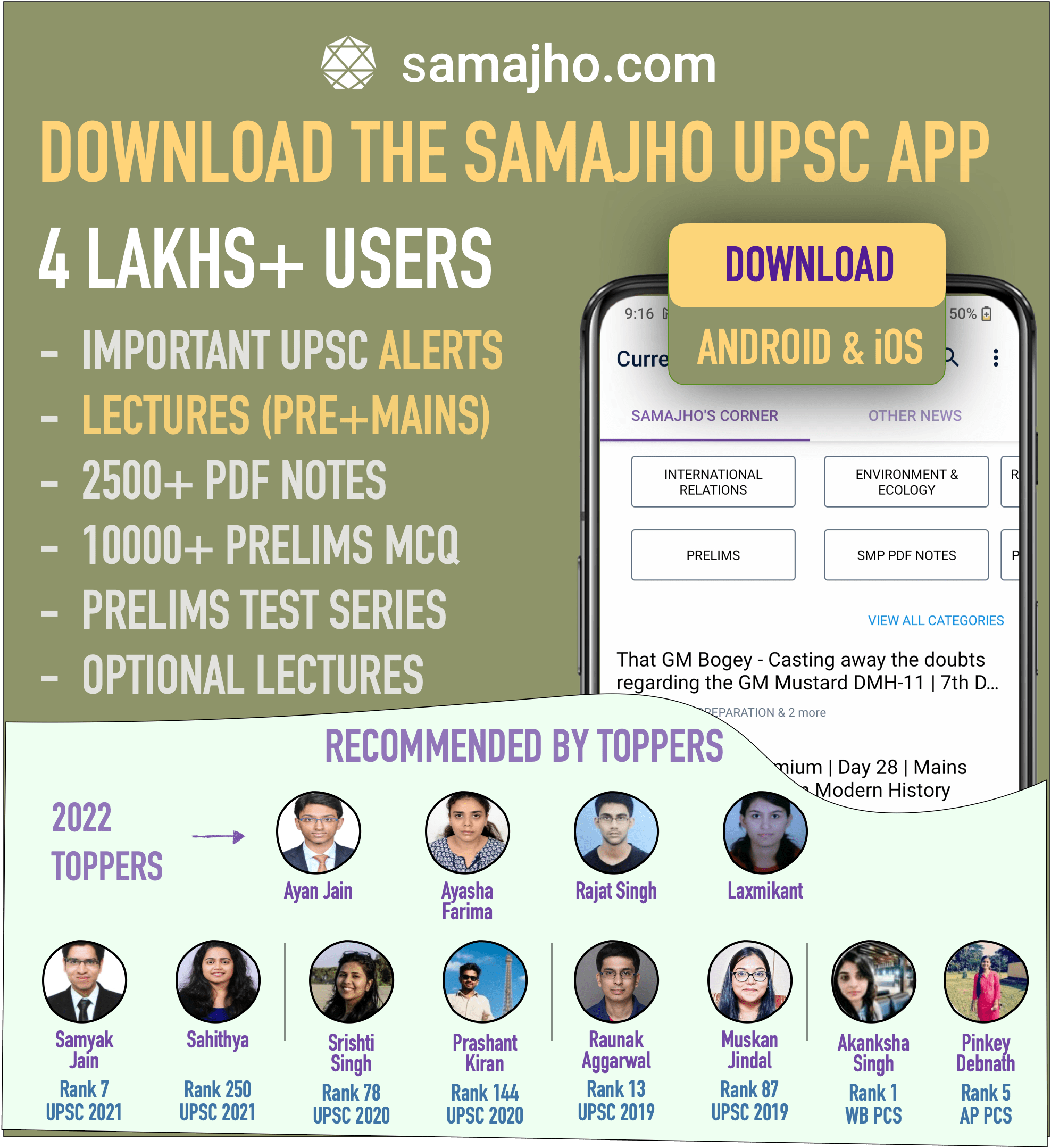Climate Talks As Shortchanging International Law | 6th December 2022 | UPSC Daily Editorial Analysis
_page-0001.jpg)
What's the article about?
- It talks about the shortcomings of ongoing negotiation of climate treaties from the perspective of developing countries, particularly India.
Relevance:
- GS3: Conservation, Environmental Pollution and Degradation, Environmental Impact Assessment;
- Essay
|
What is the climate treaty?
|
What are the shortcomings of the current negotiating process?
- First, citizens in developed countries are not even aware that two-thirds of their national emissions of carbon dioxide come from their diet, transport, and residential and commercial sectors, which together constitute the major share of their GDP; the consumption sectors are not independent silos but reflect their urban lifestyles.
- Second, the process ignores that global well-being will also follow urbanisation of the developing country’s population, requiring fossil fuels for infrastructure and energy to achieve comparable levels.
- Third, the need for vast quantities of cement and steel in developing countries for infrastructure — constituting essential emissions, as they urbanise — is not being considered.
Ignoring science while negotiating climate treaties:
- Earlier negotiations were based on science, but in Glasgow, in 2021, negotiators zeroed in on coal to reduce future emissions.
- This initiative was not based on science and it ignored the key finding of the IPCC on the centrality of the carbon budget, i.e., cumulative emissions associated with a specific amount of global warming that scientifically links the temperature goal to national action
|
What is a “Carbon Budget”?
|
|
What is Climate Justice?
|
What are the reasons for climate injustice?
- Climate injustice flows from the negotiations and not from the text of the Climate Treaty.
- First, the process adopted the structure of international law in a manner that rejected historical responsibility for a continuing problem, and steadily shifted the burden to China and India.
- Second, the agenda was set around globalised material flows described as global warming (the symptom), and not wasteful use of energy.
- Third, public finance is used as a means to secure a political objective, and not to solve the problem itself.
- Fourth, the longer term trend has been ignored.
Way Forward:
- India’s thrust on LiFE (or “Lifestyle for Environment”), with the individual shifting from wasteful consumption of natural resources goes back to the original science.
|
Lifestyle for the Environment (LiFE) Movement:
Note: LiFE Movement is very important for all stages of exam: pre, mains & interview. |
- Consumption-based framing challenges the ‘universalism’ that has dominated the negotiations and its common path of reductions based on single models.
- The carbon budget formalises a ‘diversity’ of solutions. For example, in developed countries, exchanging overconsumption of red meat for poultry can meet half the global emissions reduction required by the end of the century.
Recent Articles
- Most Important Acts, Bills in News 2024
- Most Important Places in News 2024
- Mains Monthly Magazine: December 2023
- An exchange – Analyzing the Vaibhav Fellowship Program | 26 January 2024 | UPSC Daily Editorial Analysis
- India’s problem — different drugs, identical brand names – Drug Name Confusion Threatens Patient Safety in India | 25 January 2024 | UPSC Daily Editorial Analysis
- The truth about India’s booming toy exports – Protectionism or Productivity? | 24 January 2024 | UPSC Daily Editorial Analysis
- Tax contribution by States needs to be revisited – Time to Recognize State Efficiency through Tax Contribution | 23 January 2024 | UPSC Daily Editorial Analysis
- A revival of the IMEC idea amid choppy geopolitics – Could India-Middle East-Europe Economic Corridor (IMEC) become the New Silk Road? | 22 January 2024 | UPSC Daily Editorial Analysis
- Gearing up for change – Monsoon Trends in India: Analyzing the Impact on Agriculture and Climate Resilience | 20 January 2024 | UPSC Daily Editorial Analysis
- Crafting a new phase in India-U.K. defence ties – Strengthening India-U.K. Defense Cooperation | 19 January 2024 | UPSC Daily Editorial Analysis
Popular Articles
- UPSC CSE 2022 Mains GS 1 Paper Model Answers
- Model Answers for UPSC CSE 2021 GS 2 Paper
- SPR 2023 | SPECIES IN NEWS
- UPSC CSE 2023 Mains GS 2 Paper Model Answers
- Model Answers for UPSC CSE 2020 GS 2 Paper
- UPSC CSE 2023 Mains GS 1 Paper Model Answers
- PDS: objectives, functioning, limitations, revamping
- Land Revenue System during British rule in India
- Govt policies & interventions for development in various sectors, and issues arising out of their design and implementation
- UPSC CSE 2022 Mains GS 2 Paper Model Answers
Popular Topics
ART & CULTURE
CASE STUDIES
COMMITTEES & SUMMITS
DISASTER MANAGEMENT
ECONOMICS
ECONOMICS PREMIUM
ECONOMICS STATIC
ECONOMIC SURVEY
EDITORIAL
ENVIRONMENT & ECOLOGY
ENVIRONMENT PREMIUM
ETHICS
GEOGRAPHY
GEOGRAPHY PREMIUM
GEOGRAPHY STATIC
HEALTH
HISTORY
HISTORY PREMIUM
HISTORY STATIC
INDIAN POLITY
INDIAN POLITY PREMIUM
INDIAN POLITY STATIC
INTEGRITY & APTITUDE
INTERNAL SECURITY & DEFENSE
INTERNATIONAL RELATIONS
LITE SUBSCRIPTION PREMIUM
MAINS
MAINS CORNER PREMIUM
PLUS SUBSCRIPTION PREMIUM
POLITY & GOVERNANCE
PRELIMS
PRELIMS CURRENT AFFAIRS MAGAZINE
PRO SUBSCRIPTION PREMIUM
REPORTS
SAMAJHO'S CORNER PREMIUM
SAMAJHO ANALYSIS
SAMAJHO CORNER PREMIUM
SCIENCE & TECHNOLOGY
SELF PREPARATION
SMAP ANSWER WRITING
SOCIETY
SPR
SYLLABUS
TELEGRAM
YOJANA GIST




